For many years, fantasy baseball leagues that score pitching stats tend to use Wins and Losses as major scoring categories. This happens both in categories/roto leagues and in points leagues.
However, some leagues nowadays are transitioning to using quality starts as a major category to provide more context to pitchers who pitched well, but may not have picked up a win. A pitcher who earns a quality start must meet the following criteria: 6 innings pitched, with no more than three runs allowed.
Quality Starts leagues have some interesting effects on how different pitchers are valued. In Wins and Losses leagues, relievers are more valuable because they can still earn wins whether or not they earn a save. But in a quality starts league, that value is taken away because you can only earn a quality start if you start a game.
Another major change for quality starts leagues is the value of streaming starting pitching. It becomes increasingly important to find pitchers with advantageous matchups on the waiver wire. And finding those off-the-radar pitchers going deep into games is even more important and valuable. Pitchers with higher ERAs that would not be as valuable in a W/L league have higher value in QS leagues as long as they can pitch longer than six innings.
The most significant issue to consider in quality starts leagues is that quality starts are on a downward trajectory. Part of the reason for this is that managers and front offices are putting their pitchers on pitch counts or innings limits, some due to injury, but others due to analytics. Some pitchers are known to struggle their third time through the batting order, so they will be removed in favor of relievers.
Also impacting the decline in quality starts is the fact that pitchers are throwing harder than ever. This is leading to fatigue and injury, with pitchers exerting themselves harder than ever. Here are the last 10 years of average fastball velocity for the league:
- 2022: 93.9 MPH
- 2021: 93.8 MPH
- 2020: 93.5 MPH
- 2019: 93.5 MPH
- 2018: 93.2 MPH
- 2017: 93.5 MPH
- 2016: 93.4 MPH
- 2015: 93.3 MPH
- 2014: 93.1 MPH
- 2013: 92.9 MPH
- 2012: 92.7 MPH
Because of these trends, the amount of quality starts has trended down since 2014 (aside from 2021-2022, although there is an explanation for that.) My podcast co-host Matt Kirk over at Fastball Fantasy Baseball pulled this data from 2012-2022 (excluding 2020):
| Year | Total QS |
| 2022 | 1776 |
| 2021 | 1584 |
| 2019 | 1794 |
| 2018 | 1996 |
| 2017 | 2121 |
| 2016 | 2262 |
| 2015 | 2432 |
| 2014 | 2623 |
| 2013 | 2556 |
| 2012 | 2485 |
The likely reason for such a drop in quality starts between 2019 and 2021 is because of the shortened season in 2020. Because pitchers threw so few innings, they were not able to stretch out enough to go deep into games regularly in 2021. Only four pitchers reached 200 IP that year: Sandy Alcantara, Zack Wheeler, Walker Buehler, and Adam Wainwright.
Then there was a jump back up in quality starts in 2022 as more pitchers built back up. However, the 1,776 quality starts last season still shows a downward trend after the last uninterrupted season in 2019.
To identify particular pitchers to target for quality starts leagues, let’s first identify some trends among the pitchers themselves.
Overall Quality Starts Trends
In 2021, eight pitchers finished with 20 or more quality starts. They were Wainwright, Wheeler, Buehler, Robbie Ray, Sandy Alcantara, Kevin Gausman, Brandon Woodruff, and Frankie Montas.
12 pitchers met this mark in 2022, with Alcantara as the only one to repeat. They were Framber Valdez, Alek Manoah, Yu Darvish, Shane Bieber, Martin Perez, Miles Mikolas, Justin Verlander, Corbin Burnes, Gerrit Cole, Max Fried, and Joe Musgrove.
Of pitchers with 15 or more quality starts in the last two seasons, the ones to repeat that mark (aside from Alcantara) were:
- Robbie Ray
- Sandy Alcantara
- Adam Wainwright
- Zack Wheeler
- Kevin Gausman
- Brandon Woodruff
- Max Fried
- Kyle Gibson
- Max Scherzer
- Corbin Burnes
- Gerrit Cole
- Luis Castillo
- Jose Berrios
- German Marquez
- Chris Bassitt
- Joe Musgrove
- Sean Manaea
- Cole Irvin
Of those 18 pitchers, 12 fall in the top 40 of Nick Pollack’s Top 300 Starting Pitchers. But it also shows that pitchers who rank lower in W/L formats could hold more value in QS formats.
It is also important to identify which pitchers are trending in the right direction in terms of quality starts. While some pitchers may have seen their innings decrease over the last two years, others have increased their IP and thus have more opportunities for QS.
Pitchers Whose QS Are Trending Up
In 2021, 123 pitchers recorded at least five quality starts, and in 2022, that number was 129. Berrios, Germán Márquez, Jordan Lyles, and Sonny Gray all repeated their 2021 QS totals in 2022 (17, 17, 13, and 9 respectively).
Of the 129 pitchers from 2022 with at least 5 QS, 92 recorded more quality starts in 2022 than they did in 2021. Some of those pitchers had no quality starts in 2021, whether due to injury (Justin Verlander), or because they were not called up then (Hunter Greene).
Below are pitchers who had fewer than 5 quality starts in 2021, along with their quality start total from 2022 in parentheses. This shows an upward trend for these pitchers over the past two seasons. Some of the pitchers below could continue to trend upward, while others are at risk of losing quality starts this season.
- Martín Pérez (23)
- Miles Mikolas (22)
- Justin Verlander (21)
- Kyle Wright (19)
- Johnny Cueto (18)
- Corey Kluber (15)
- Nestor Cortes (13)
- Cristian Javier, Tony Gonsolin, Joe Ryan, Carlos Carrasco, Patrick Sandoval, Jesus Luzardo (11)
- Spencer Strider, Ross Stripling, Alex Cobb, Dane Dunning (10)
- Drew Rasmussen, Jose Quintana, Michael Wacha, Hunter Greene, Noah Syndergaard, Graham Ashcraft (9)
- Luis Severino, Justin Steele, Dean Kremer, Michael Kopech, Nick Lodolo, Michael Lorenzen, Glenn Otto, Dakota Hudson, Chad Kuhl (8)
- Reid Detmers, Adrian Sampson, Jose Urena, Jonathan Heasley (7)
- Jeffrey Springs, Mike Clevinger, Bailey Falter, Kyle Bradish, Beau Brieske, Matt Manning (6)
- Tyler Wells, Jake Odorizzi, Braxton Garrett, Bryse Wilson (5)
Some of these pitchers should see even more quality starts this season than their 2022 totals thanks to being further removed from injury, including Verlander, Kluber, Gonsolin, Syndergaard, and Severino.
Many young pitchers burst onto the scene last year, and with some improvements in their sophomore seasons, could improve their QS totals in 2023. Wright, Cortes, Javier, Strider, Rasmussen, Greene, Ashcraft, Steele, Lodolo, Detmers, Falter, Garrett, and Springs are all good bets to continue to improve with longer leashes in terms of pitch counts and innings limits.
Rasumssen, Lodolo, Garrett, and Springs in particular should be targets because of how good their stuff was last year. Check out their PLV scores from 2022:
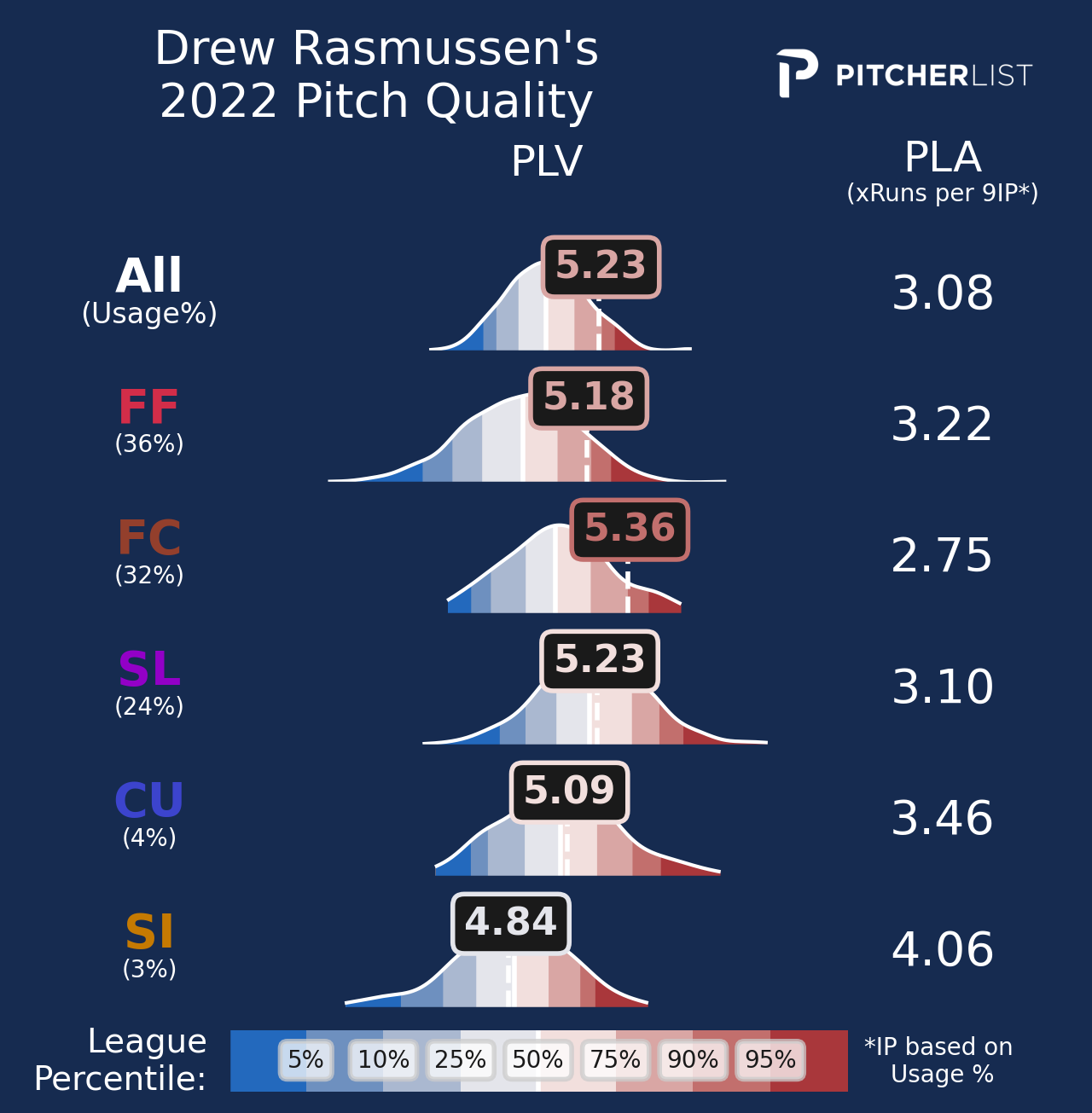

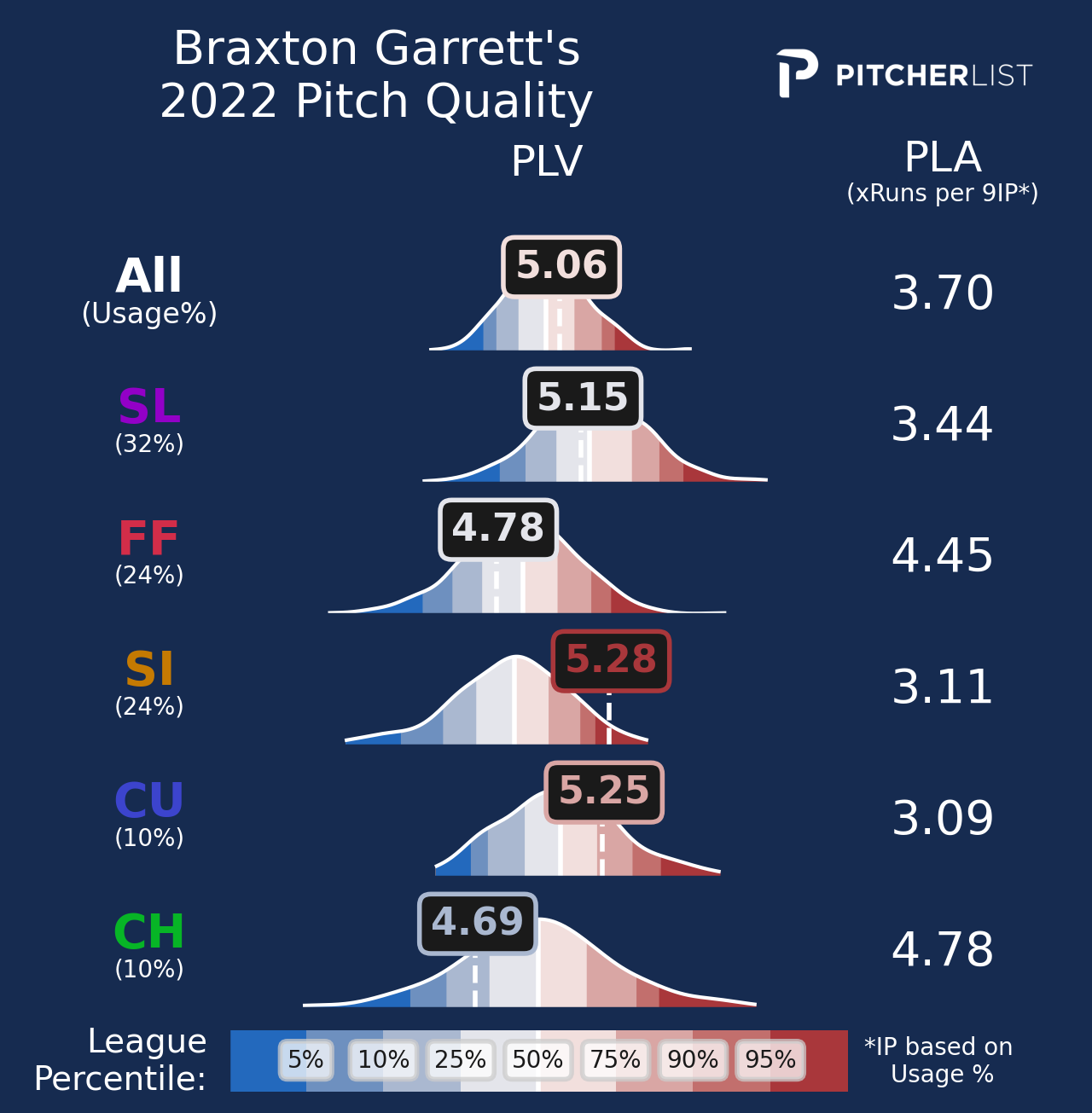
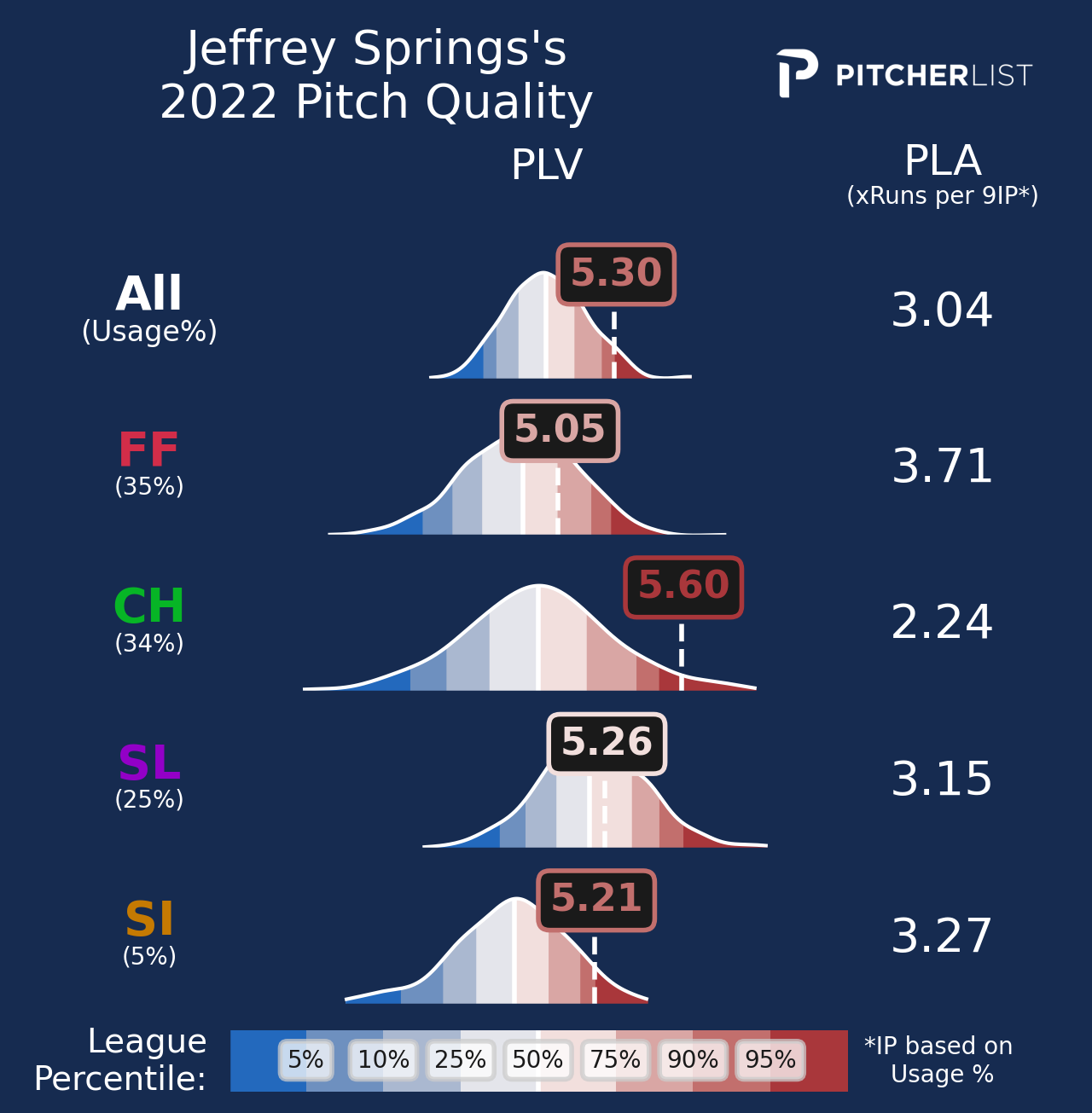
Pending good health in 2023, some others that should continue to see a trend of increased quality starts are Ryan, Carrasco, Sandoval, Luzardo, Cobb, Quintana, Wacha, Lorenzen, Wells, and Kopech. Each of these players has a starting job ahead of the coming season and likely is not at risk of demotion or being sent to their team’s bullpen.
Wacha’s stuff is better than you may realize (excluding his sinker.) Three of his pitches are above league average, including his changeup, which grades as a quality pitch. His only bad pitch is his sinker, which he used 13% of the time last season:
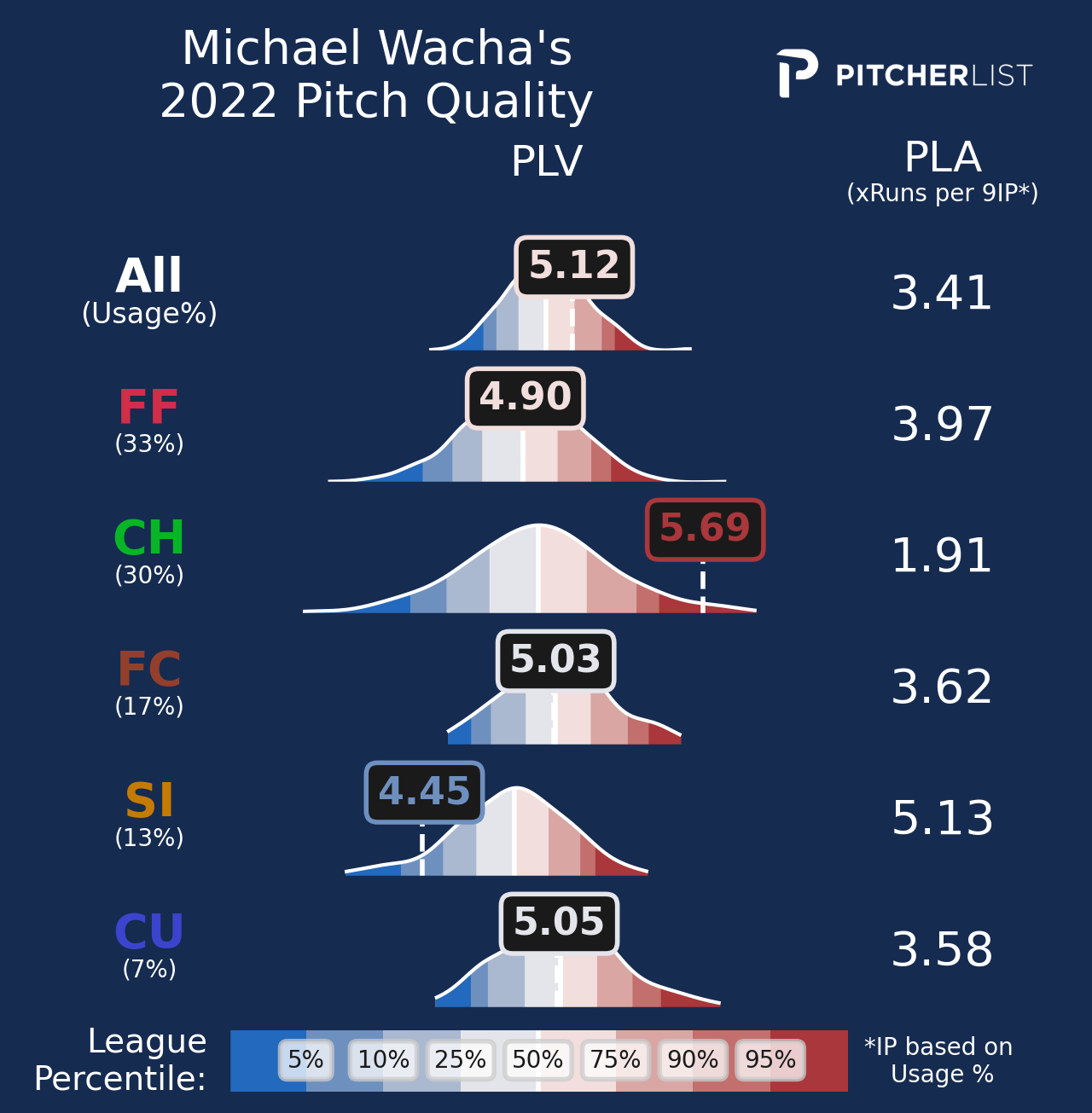
Wells is another pitcher, in particular, who could improve based on how his pitches performed in 2022. Three of his pitches were above league average, with his changeup grading as a quality pitch. His fastball and curveball were just a hair below league average:
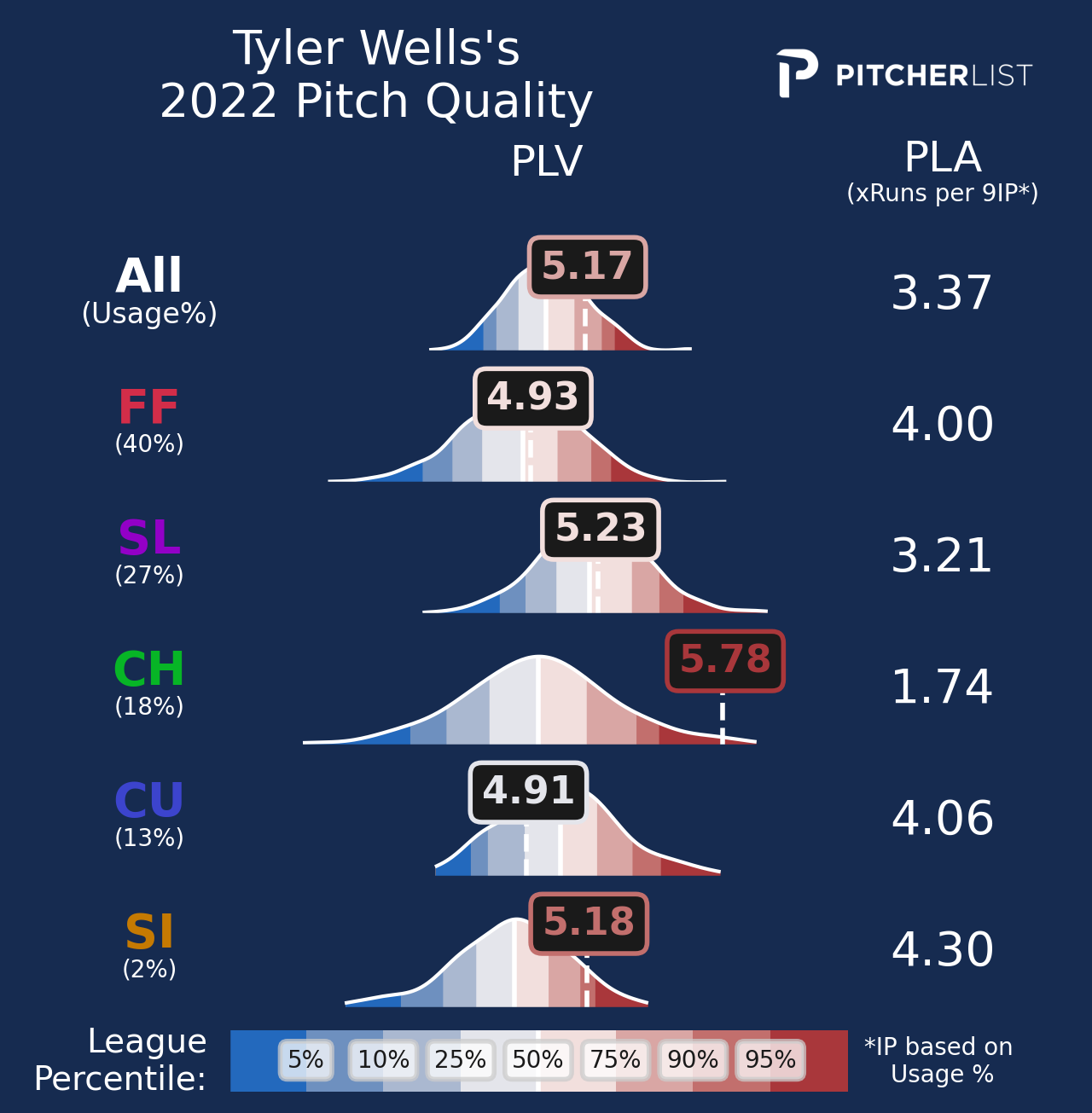
Cobb should likely see some better luck in 2023 after dealing with a .336 BABIP (.297 career BABIP), 68% LOB rate, and an xFIP that was nearly a run lower than his 3.73 ERA. Another reason to expect better performance for Cobb is in his PLV data. All of his pitches are league average or better:
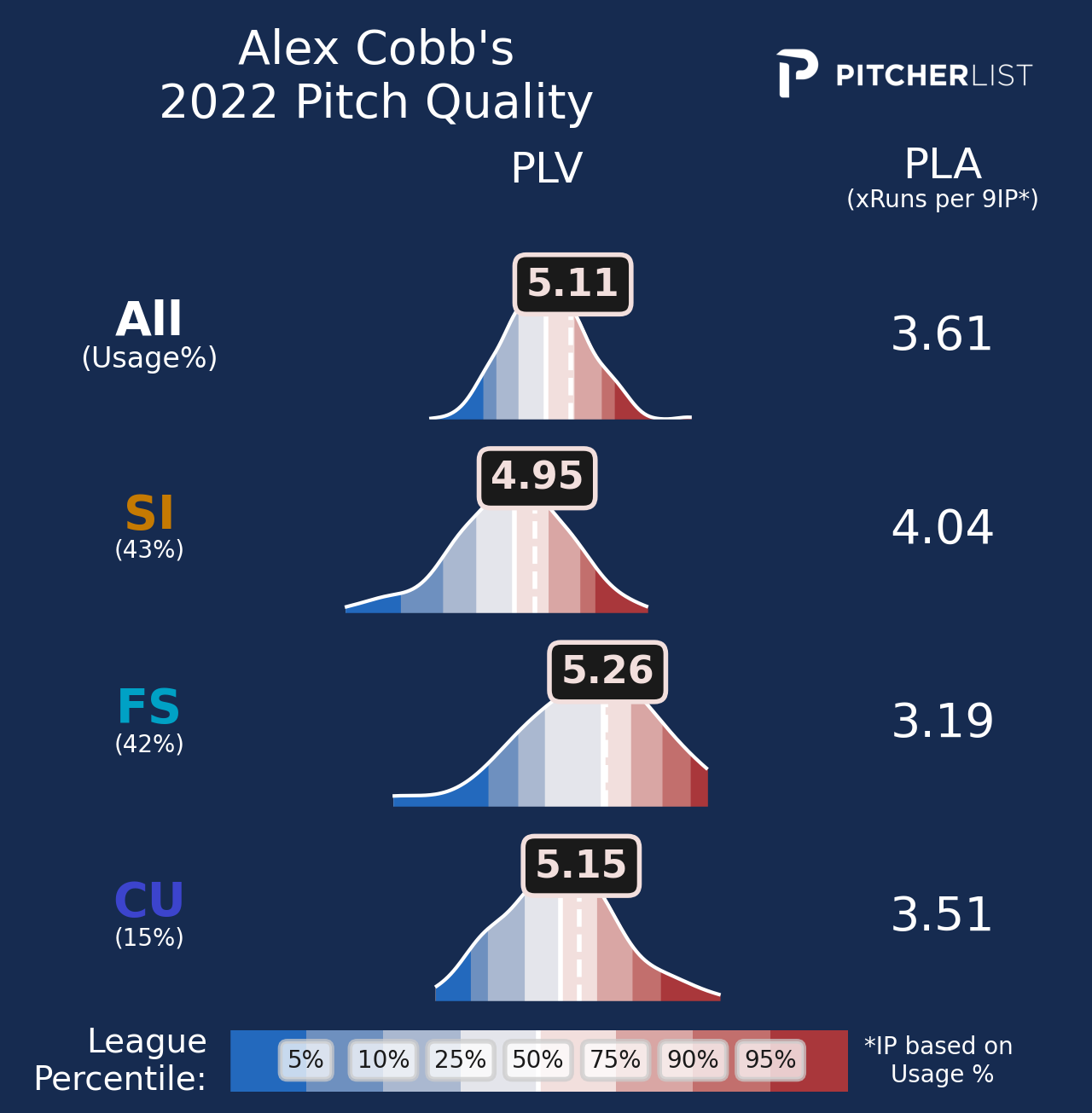
A number of these pitchers also dealt with injuries in 2021 (Ryan, Luzardo, Wells, Kopech), so could see a major bounce-back in 2023.
Others to consider drafting in QS Leagues: Julio Urias, Triston McKenzie, Merrill Kelly, Cal Quantrill, Dylan Cease, Carlos Rodon, Shohei Ohtani, Logan Gilbert, Jordan Montgomery, Pablo Lopez, Brady Singer, Eric Lauer, Taijuan Walker, Clayton Kershaw, Jameson Taillon, Nick Pivetta, Blake Snell, George Kirby, or Brad Keller.
Pitchers to Avoid in QS Leagues
A few of the pitchers from the list above may have reached their quality start ceiling in 2022. Perez, Mikolas, and Cueto had impressive seasons, but Perez’s 2.89 ERA was far better than his xFIP (3.80), and SIERA (4.08). Similarly, Mikolas pitched to a 3.29 ERA, but a 3.80 xFIP and 3.99 SIERA. Cueto was lights out for a stretch last season, finishing with a 3.35 ERA, but a 4.38 xFIP, and a 4.49 SIERA.
Furthermore, each of those three pitchers performed poorly last year in terms of PLV, adding to the idea that they far outperformed their expectations, especially Perez and Cueto:
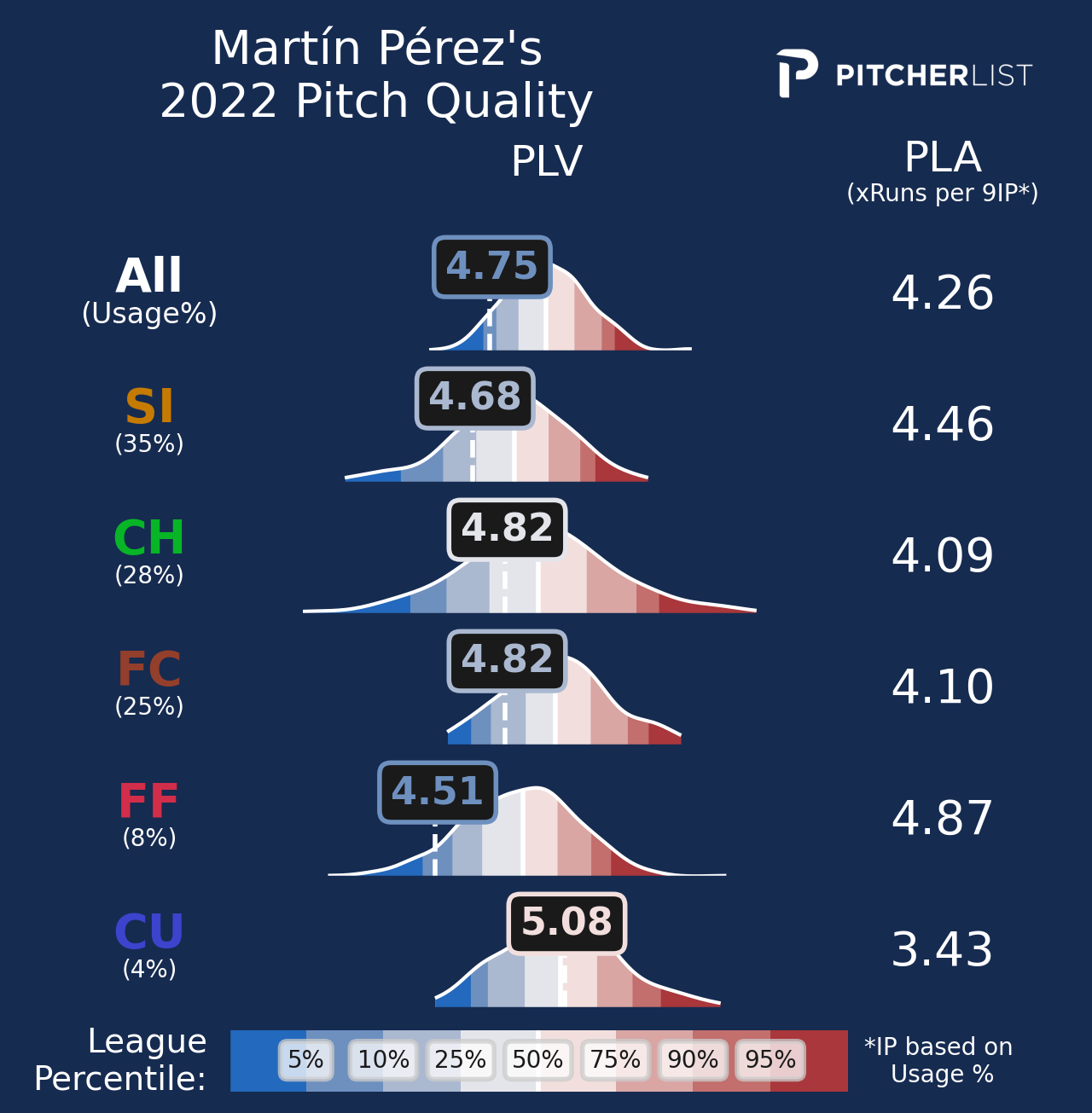
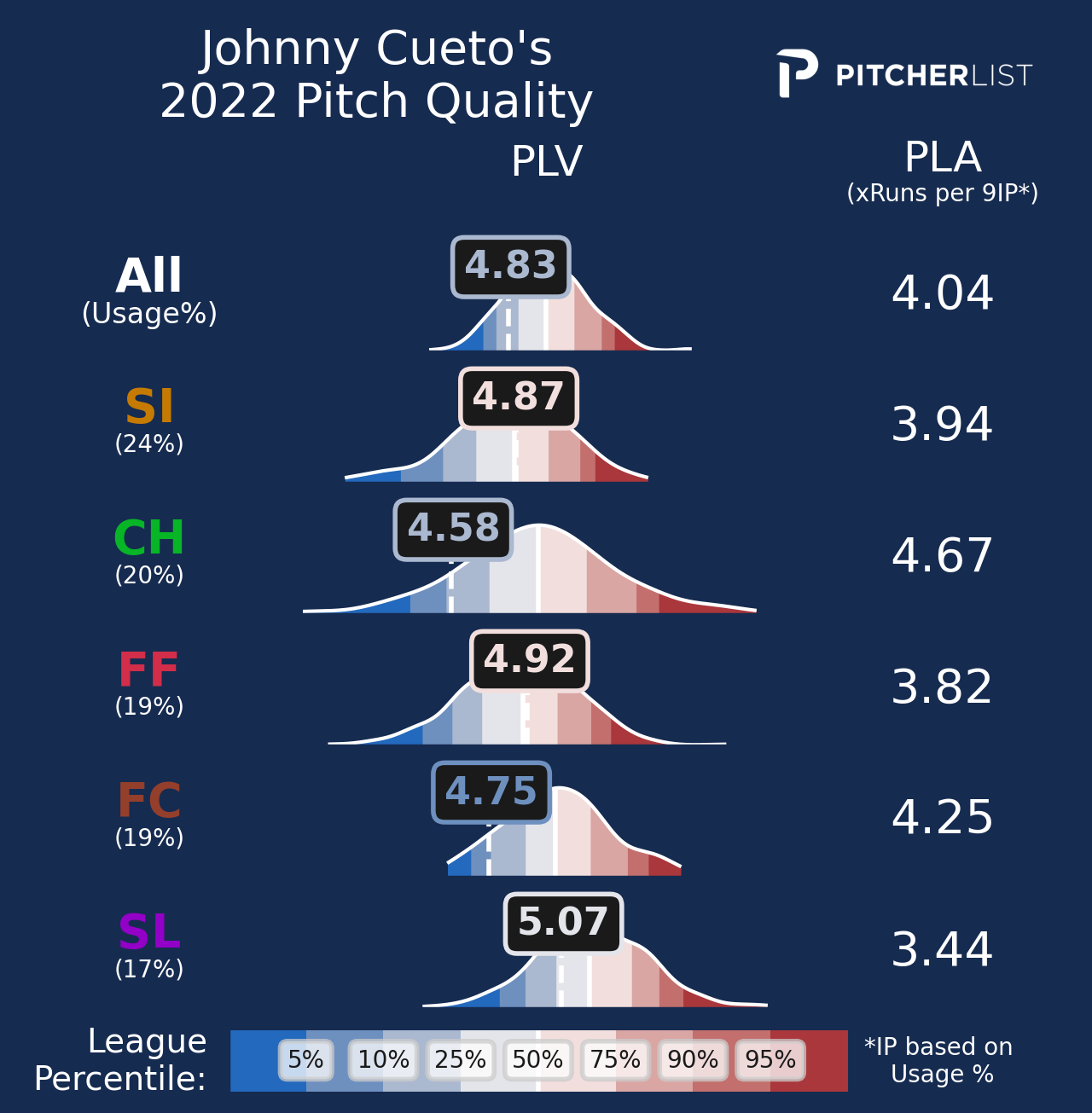
Despite increasing the QS total from 2021-2022, several of the pitchers on the list above will likely spend most of their time in the bullpen. Additionally, some of them could be optioned down to the minors or even cut prior to the start of the season. Pitchers from the list above who could end up outside of a rotation are Stripling, Dunning, Otto, Hudson, Kuhl, Urena, Heasley, Sampson, Bradish, Brieske, Odorizzi, and Wilson.
There are also pitchers who are on a downward trajectory in quality starts from 2021-2022. 32 pitchers with five or more quality starts in 2021 had fewer in 2022. Among them are pitchers like Adam Wainwright, Madison Bumgarner, Kyle Gibson, Zach Greinke, Lance Lynn, and Rich Hill; all aging pitchers that have seen their performances impacted in recent years.
Bumgarner’s recent struggles can largely be attributed to his low pitch quality as shown by his PLV data below. His cutter is league average, but his other three pitches are below league average, and his changeup grades as a bad pitch:
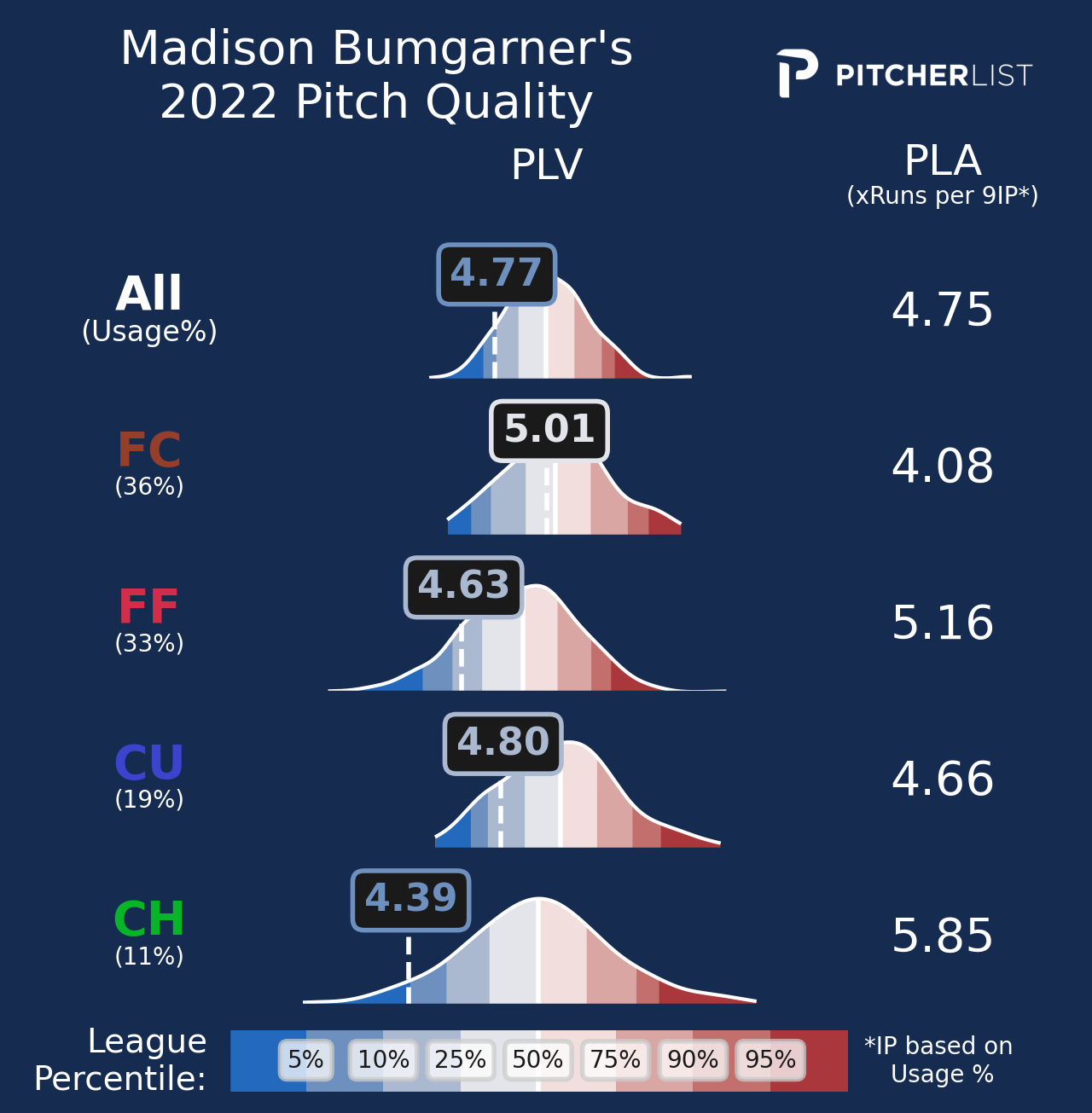
Wainwright put up a 3.71 ERA last season, but that was in spite of having two pitches grade as bad pitches and another as a below average pitch. With his pitch quality declining and his age, he is a likely candidate for fewer innings and fewer quality starts in 2023:

Other pitchers carry injury risk and have seen a recent decrease in quality starts like Max Scherzer, Lance McCullers, Jacob deGrom, Alex Wood, Frankie Montas, and Marcus Stroman.
Some others simply have not performed well enough to go deep into games, and are at continued risk of being pulled early in 2023: Patrick Corbin, Lucas Giolito, James Kaprieleian, Adrian Houser, and Aaron Civale.
Several others to avoid in QS leagues include Kris Bubic, Drew Smyly, Domingo German, Antonio Senzatela, Nathan Eovaldi, Jon Gray, Charlie Morton, and Tyler Mahle.


so little content out there regarding QS, this is great! thx Taylor